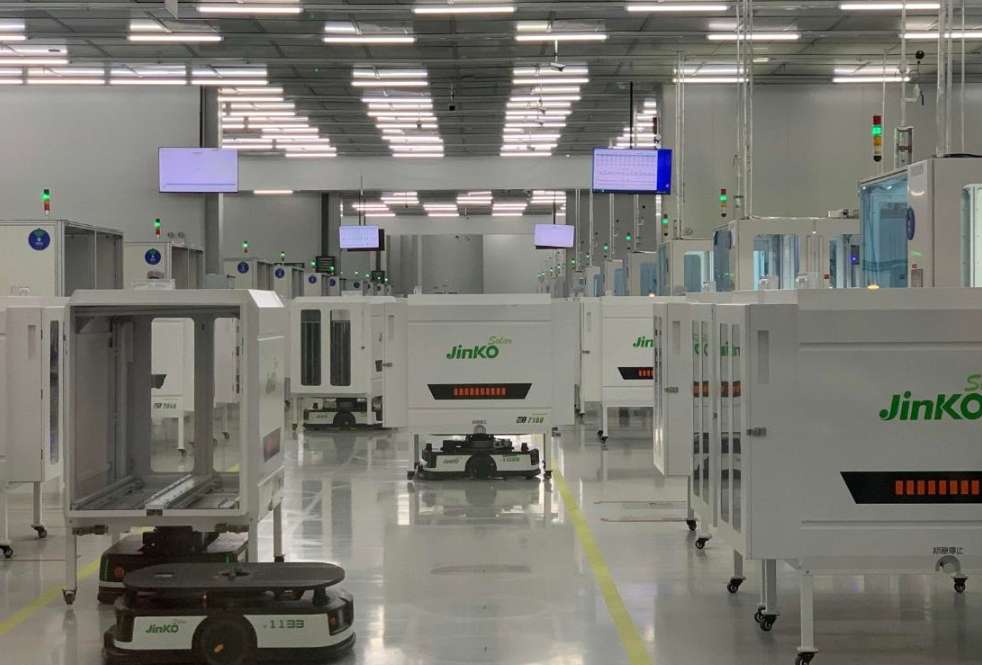In the tumultuous landscape of the photovoltaic (PV) industry, a rather unsettling trend has emerged, reflecting the struggles of a sector that, despite its promises of renewable energy solutions, is facing serious challenges. At the forefront of this solar saga is JinkoSolar, a company that initially carved a successful niche for itself by betting heavily on TopCon technology, a move it made as competitors pivoted towards N-type production. However, recent events have cast a shadow over JinkoSolar's once-unassailable position, raising questions about the sustainability of its success.
As we dive into the numbers, the narrative takes a turn that no one, especially those within the industry, could have anticipated. In 2023, JinkoSolar reported staggering growth figures, with a net profit of approximately 74.4 billion yuan, reflecting a jaw-dropping year-on-year increase of 153.2%. When we juxtapose this impressive growth with that of its rival, Longi Green Energy, which recorded a net profit of 107.5 billion yuan but suffered a 27.41% drop in the same period, it becomes evident that JinkoSolar had established itself as a frontrunner riding the wave of a solar boom.
Notably, however, the winds of fortune can shift dramatically in such a highly competitive environment. While JinkoSolar enjoyed a first-mover advantage in TopCon technology, recent disclosures have indicated that pressure is mounting, and the company may no longer be able to sustain its earlier achievements. On January 17, 2024, the company disclosed projections for its upcoming performance, forecasting a shocking dip in net profit to between 8 million and 12 million yuan in 2024, marking a staggering decrease of up to 98.92% year-on-year. This warning sign sets the stage for an unsettling reality check for a company that had recently reigned supreme.
Scrutiny of these projections reveals a significant slowdown, especially when considering that JinkoSolar had initially boasted a net profit of 12.15 billion yuan across the first three quarters of 2024 alone. If, indeed, fourth-quarter performances result in losses exceeding 10.95 billion yuan, one must question what went wrong. The explanation lies in an intensifying competition that has forced JinkoSolar into a corner, where low-priced orders have adversely impacted profit margins.
In the wake of this financial turbulence, it's essential to understand the drivers behind the shift. The TopCon technology, previously heralded for its cost-efficiency and competitive advantages, finds itself questioned in light of emerging alternative technologies. TopCon's rapid rise rested on the ability to incorporate additional equipment and upgrade production lines with relatively low investment compared to other technologies. However, as illustrated by current market trends, its dominance appears threatened. Data from market analysis suggests that, by the end of 2024, the total battery production capacity could reach approximately 1417 gigawatts, of which TopCon technology accounts for over 940 gigawatts, nearly two-thirds of the total capacity. Yet, this saturation suggests that a supply-demand imbalance is looming on the horizon.

One cannot ignore the broader implications either. The specter of a price war now looms ominously. Recent tender results revealed bids for solar panels dropping dramatically below cost levels, with some companies offering prices as low as 0.531 yuan/W, substantially hindering profitability. As competitors ramp up production, those still carrying the weight of previous value and pricing strategies may find it increasingly difficult to navigate these waters without significant losses.
The aftermath of JinkoSolar's earnings forecast has sent shockwaves, triggering a nearly 10% drop in its stock price in the U.S. markets. Similarly, in its domestic A-share market, the firm's share price plummeted, leading to a decrease in market valuation of over 41% since its peak. The decline raises questions: How can a company that was once soaring now find itself so grounded?
A closer examination certainly reveals more than just market forces at work. A mounting debt burden is hindered JinkoSolar's ability to adapt and respond to the evolving landscape. Since its public listing in 2022, the company reportedly raised approximately 224 billion yuan directly from the capital markets but also incurred significant bank loans amounting to 1856.71 billion yuan, propelling its debt-to-asset ratio to a staggering 71.89% by the third quarter of the previous year. As of late 2023, with over 900 billion yuan in liabilities, JinkoSolar's financial health appeared precarious. The juxtaposition of these figures starkly illustrates the challenge: liquidity is scarce, and current assets fall short of meeting immediate obligations.
Further complicating matters is the looming threat posed by emerging technologies. The anticipated rise of BC technology, with its potential advantages in efficiency and cost, casts doubt on the long-term viability of TopCon dominance. Analysts argue that the main advantage of BC technology lies in its superior conversion efficiencies, which could soon rival or exceed those of TopCon, upending the current market dynamics. This could force companies like JinkoSolar to recalibrate their strategies once again.
Considering all these factors, it's clear that JinkoSolar's troubles signify more than just short-term setbacks; they epitomize an industry in flux, grappling with technological transitions and market volatility. The dual pressures of operational losses and overwhelming debt underscore that the forthcoming chapters of JinkoSolar's story may be fraught with challenges.
In conclusion, as JinkoSolar ponders its next steps amid an evolving energy landscape, the need for strategic agility has never been clearer. The company will have to navigate a minefield of competitive threats, fluctuating demand, and internal financial pressures if it hopes to emerge stronger. What remains to be seen is whether JinkoSolar can adapt and leverage its remarkable expertise to find a renewed path forward in this rapidly changing world.